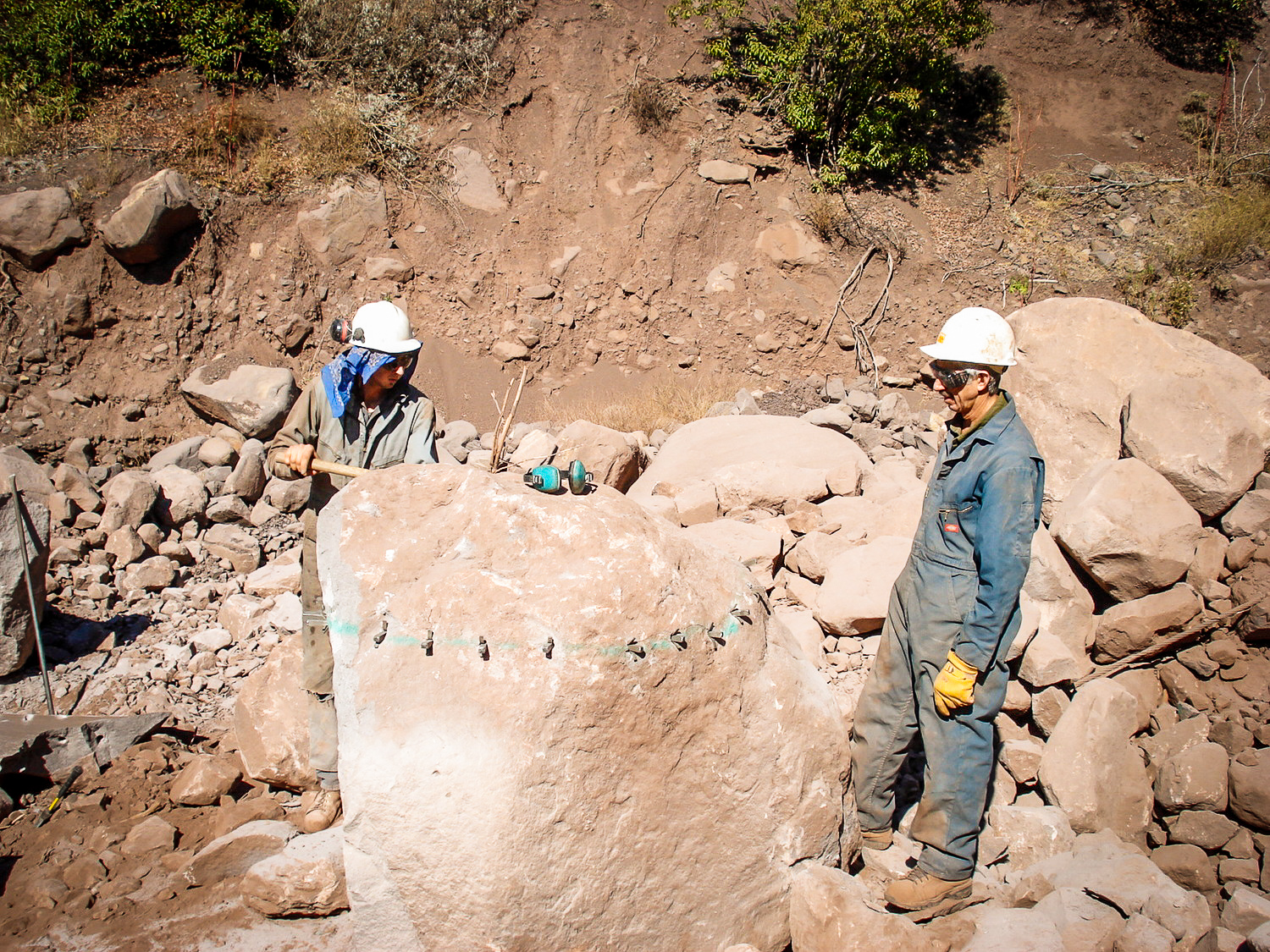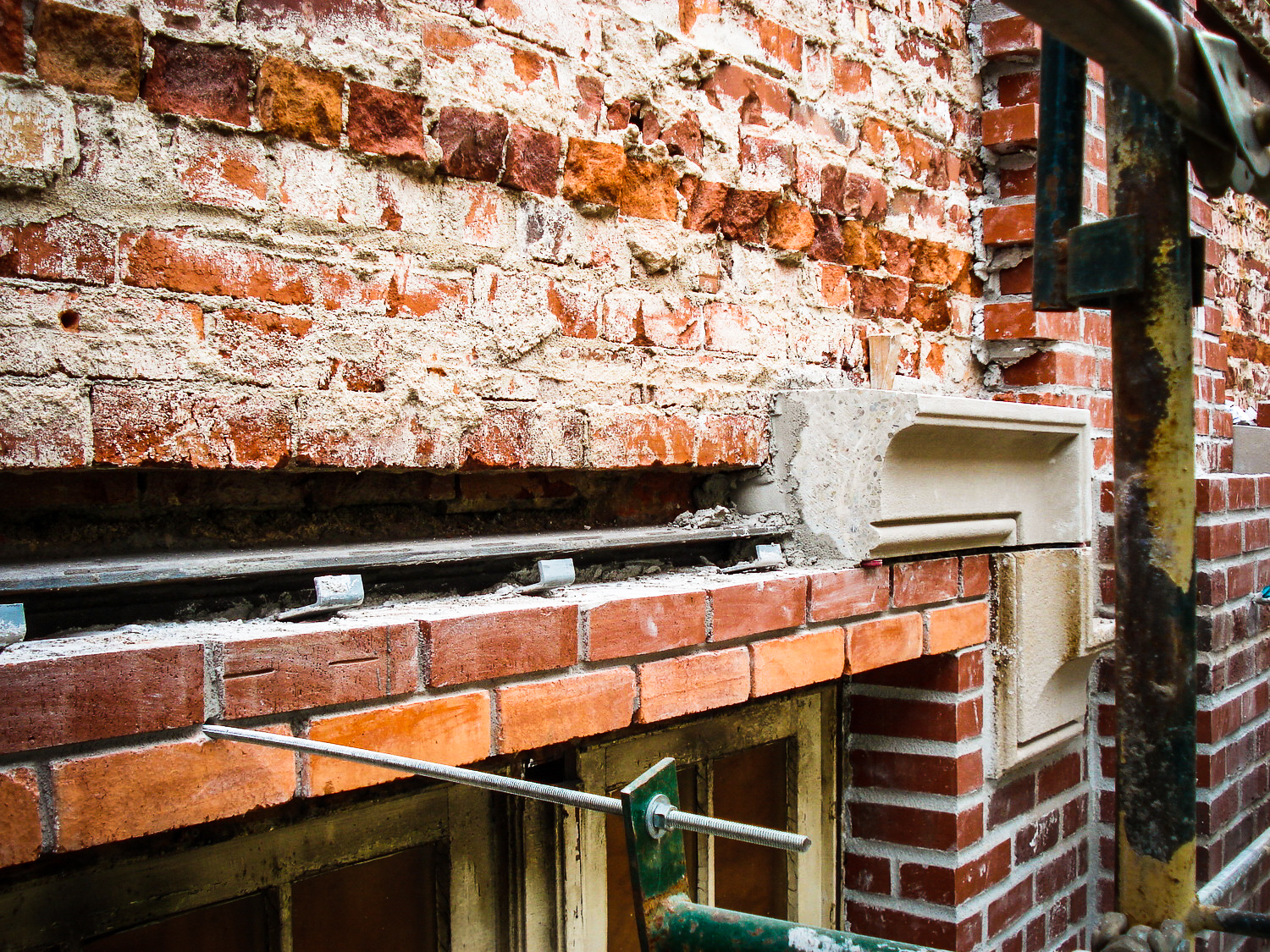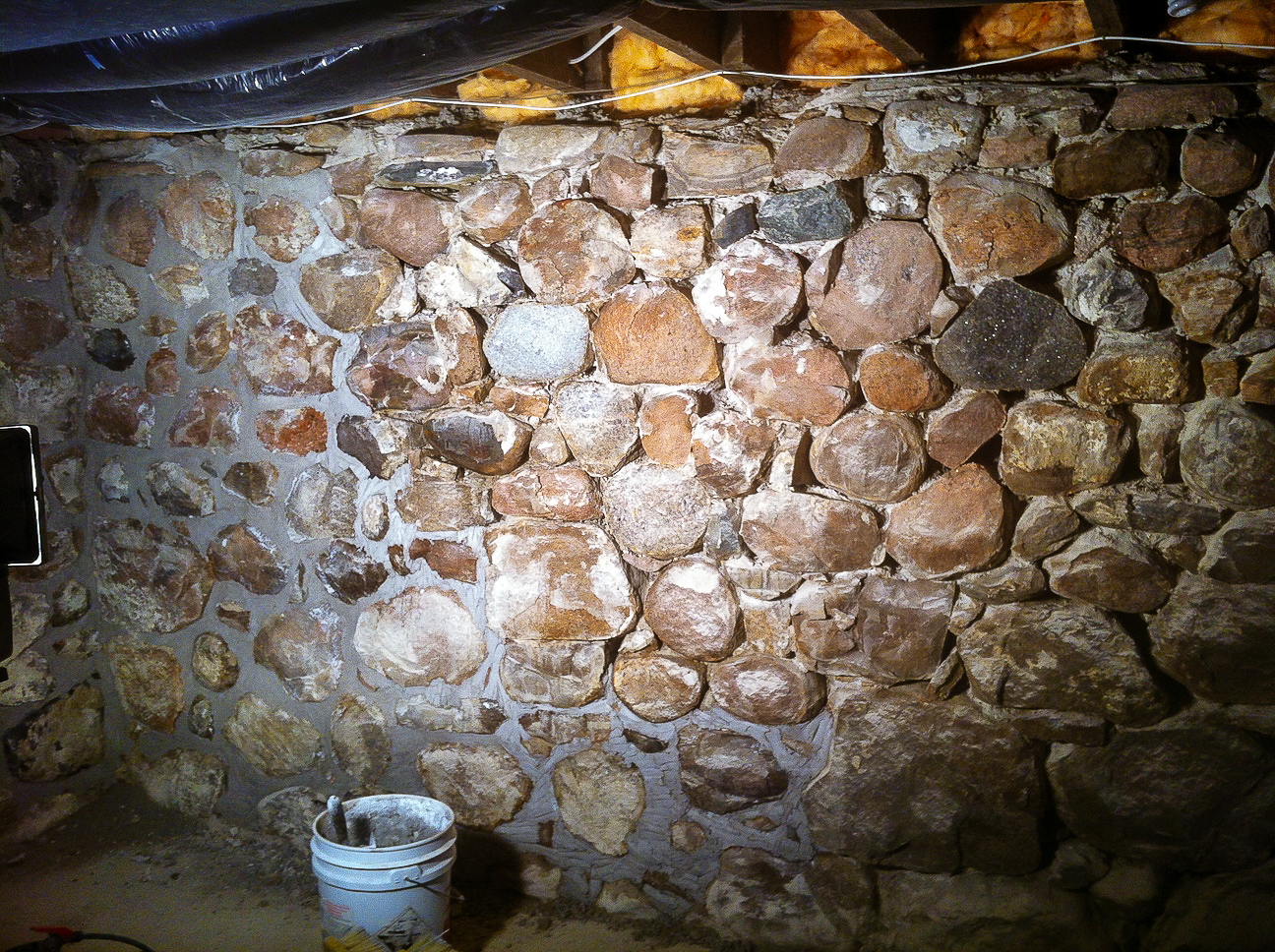Using forged tungsten carbide chisels, sharpened claw chisels and mallets our masons can provide ornamental limestone and sandstone details for your restoration. Our primary service of carving is the production of stone window sills or lintels for new openings on your building, or just replacement of the rotted wood or deteriorated stone sills. Our lead stone mason has over 20 years of experience working with stone, from granite to sandstone.
service covering all facets of historic stone restoration
Replication and restoration of historic stone details
Stone Restoration Services
A dutchmen stone repair is performed when it either will cause structural instability removing the entire masonry unit, or localized deterioration or damage to a unit that over, is in good shape. This repair involves cutting away the damaged stone leaving clean edges, preferably on a profile making it easier to hide the splice. A new stone is produced and mortared, epoxied, or a combination of pinning with stainless dowels and one of the former.

Regardless what the stone replacement job is, whether a dutchmen, an entire unit replacement or adding a new sill to a building, sourcing the correct stone is the first step. We have contacts at quarries across the country, providing our clients several varieties of sandstone and limestone. Also an array of fieldstone, raw, cut, dressed, squared in any combination is available, saved from building demolitions in Southern Ontario.

Whole unit replacement involves the careful supporting, of masonry followed by the removal of the stone to be later duplicated. For a proper repair tight tolerances must be adhered to as well as stone colour variances. Creating a perfect replacement then allows for a tight reinstallation, followed by repointing and tinting.

We have the capability to perform a wide variety of pointing styles on stone work. The most commonly seen style is the conventional tapped finished. However, raised ribbon pointing, maybe one of the most aesthetically pleasing ways to accentuate stone work. The mortar mixing is half of the battle when preforming this style of pointing. For stone pointing, a balance of hardness, durability and low shrinkage must be achieved, and must be acheived with lime mortar as to not damage the original lime mortar behind the pointing.

The most common processes for cleaning stone are either a chemical wash followed by a medium pressure rinse, or our preferred method- low impact vapour blasting. This system is a far cry from sandblasting systems. Our specialty cleaning system uses a mixture of low pressure air, small amounts of water and a safe, inert, fine aggregate such as calcium carbonate. This provides gentle cleaning of any building finish such as brick, stone, wood and concrete without damaging the substrate.

After standing up to it for a century bacterial processes and acidity of rain can wreak havoc on foundations. This combined with improper drainage or damaged weeper systems can cause the sever deterioration of lime mortar on the building. Slowly water can work its way into the wall breaking down the lime mortar and allowing soil to migrate into the joints of the stonework. This maintains the foundation in a state of continuous saturation. We have been able to consolidate many rubble foundations by breaking out the deteriorated mortar and often soil then repointing with an appropriate mix of lime mortar.

Related Articles






